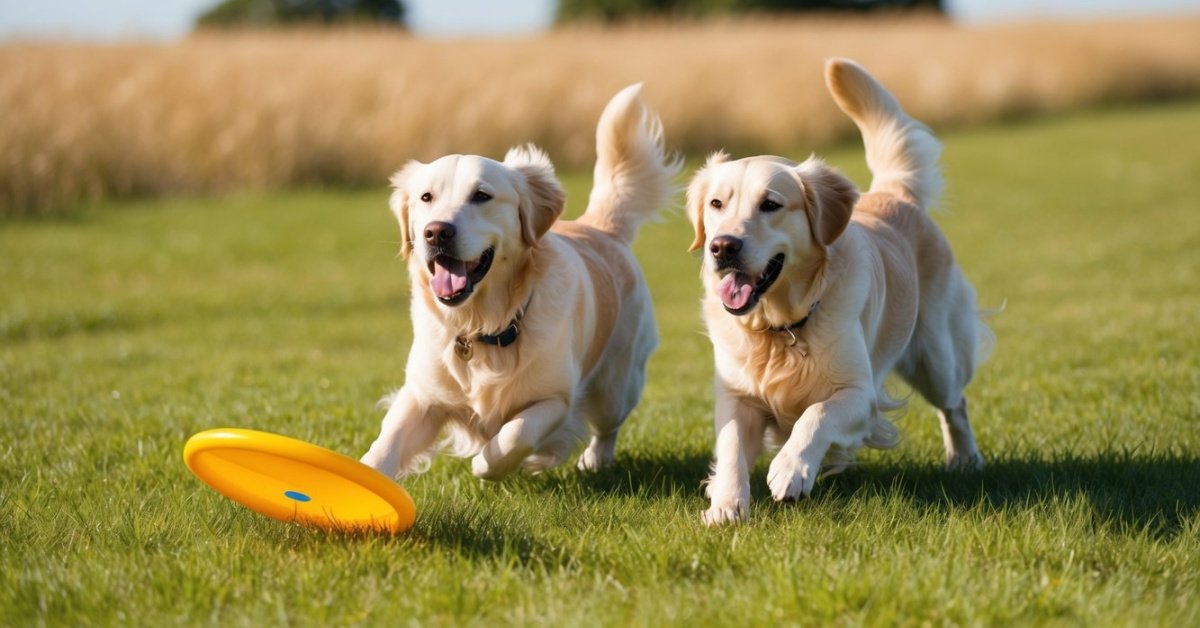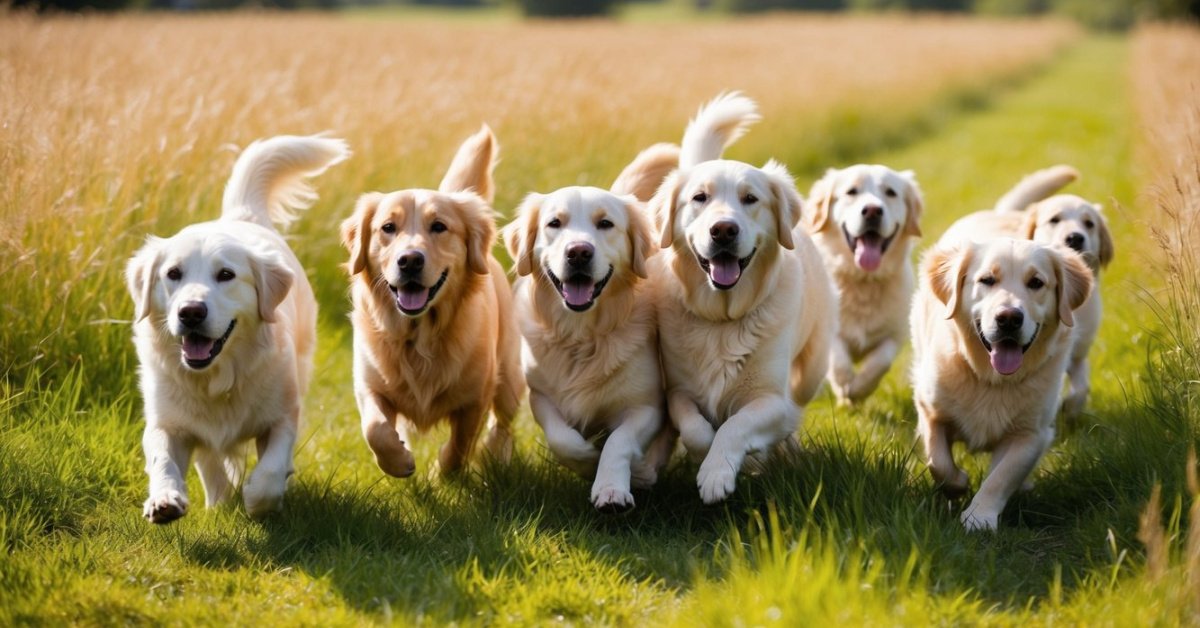As our beloved golden retrievers age, their exercise needs change just like ours. I’ve seen how important it is to keep them active while being mindful of their joints and energy levels. A well-structured exercise plan can help maintain their health, happiness, and overall quality of life in their golden years.
Understanding the Needs of Senior Golden Retrievers
Senior golden retrievers have specific needs that change as they age. It’s essential to tailor their exercise plans to support their well-being and happiness.
Physical Activity Requirements
Senior golden retrievers require regular physical activity to maintain their mobility and mental stimulation. Daily walks should last between 20 to 40 minutes, adjusted for each dog’s stamina. Low-impact activities, such as gentle fetch or short swims, further promote fitness while minimizing strain on joints. Consistency matters, so aim for at least five days of exercise each week. Additionally, incorporating stretches can enhance flexibility and prevent stiffness, ensuring they remain agile.
Health Considerations
Health considerations are critical when developing exercise plans for senior golden retrievers. Arthritis and joint issues are common in aging dogs, so I monitor their comfort levels closely. If my dog shows signs of fatigue or discomfort, I modify the intensity or duration of activities. Regular veterinary check-ups help assess any underlying health concerns that may affect activity levels. Staying aware of their weight is crucial, as obesity can exacerbate joint problems. A balanced diet, combined with an appropriate exercise regimen, plays a significant role in their overall health and quality of life.
Benefits of Regular Exercise
Regular exercise offers numerous benefits for senior golden retrievers, promoting both physical and mental well-being. A consistent routine helps maintain their health, increases longevity, and improves their overall quality of life.
Improved Joint Mobility
Improved joint mobility results from low-impact exercises tailored for senior golden retrievers. Activities like gentle walks and swimming enhance flexibility and keep joints functional. Stretching routines also contribute to better range of motion. When senior dogs engage in regular, moderate exercise, they often experience reduced stiffness and discomfort associated with aging and conditions like arthritis.
Enhanced Mental Stimulation
Enhanced mental stimulation occurs through varied activities. Engaging in new environments during walks encourages exploration and curiosity. Interactive games, such as gentle fetch or hide-and-seek, can keep their minds sharp and focused. Social interactions with other dogs or people during these activities boost their emotional well-being, reducing anxiety and boredom. Keeping the mind active contributes significantly to a happy, healthy senior golden retriever.
Designing Effective Exercise Plans
Creating effective exercise plans for senior golden retrievers ensures they stay healthy and active. It’s essential to tailor activities to their unique needs, considering factors like joint health and energy levels.
Types of Exercises
- Walking: Walking provides low-impact cardiovascular exercise. I recommend daily walks of 20 to 40 minutes, adjusting the pace to match my dog’s comfort.
- Gentle Fetch: Playing fetch with a soft toy helps maintain physical activity. Keeping the distance short and avoiding hard surfaces protects my dog’s joints.
- Swimming: Swimming is an excellent low-impact workout that strengthens muscles without stressing joints. It’s refreshing, especially on hot days.
- Interactive Games: Games like hide-and-seek stimulate my dog mentally and physically. It fosters engagement and keeps them curious about their environment.
- Stretching: Stretching prevents stiffness and enhances flexibility. Incorporating simple stretches before and after exercise sessions benefits overall mobility.
Duration and Frequency
- Exercise Duration: I aim for sessions lasting between 20 to 40 minutes, depending on my dog’s energy level and comfort. Shorter bursts of activity may be ideal for those with limited stamina.
- Weekly Frequency: I maintain exercise routines at least five days each week. Consistent activity fosters routine, helping my golden retriever remain active and engaged.
- Rest Days: Incorporating rest days into the plan is crucial. It allows my dog to recover, especially after more intense physical activities.
- Observation: Monitoring my dog’s behavior during exercise sessions helps gauge comfort levels. If any signs of discomfort appear, I adjust the plan accordingly.
Keeping these points in mind while designing exercise plans can greatly enhance my golden retriever’s quality of life.
Tailoring Exercise Plans to Individual Needs
Creating an effective exercise plan for senior golden retrievers involves careful consideration of their unique health needs and abilities. This customization enhances their well-being and ensures they remain active.
Assessing Health Conditions
Assessing health conditions is crucial when designing exercise plans. I monitor for signs of arthritis, hip dysplasia, or other joint issues. Regular veterinary check-ups provide insight into any underlying health concerns. Symptoms like limping or reluctance to move signal the need for adjustments in their activity. Keeping a close eye on these indicators ensures I can modify the plan to prioritize their comfort.
Adjusting Intensity Levels
Adjusting intensity levels is essential for meeting the specific needs of senior golden retrievers. I typically start with low-impact activities like gentle walks or swimming. Increasing intensity gradually, while gauging my dog’s response, helps prevent strain. Activities should last 20 to 40 minutes, at least five days a week, allowing flexibility to incorporate more vigorous play if my dog shows enthusiasm. Incorporating rest days facilitates recovery and keeps them engaged without overexertion. By regularly assessing their energy levels and enthusiasm, I can fine-tune their exercise routine to keep it both enjoyable and beneficial.
Safety Tips for Exercising Senior Golden Retrievers
Keeping senior golden retrievers safe during exercise is crucial to their health and happiness. By following specific safety tips, I can help ensure my furry friend enjoys their activities while minimizing risks.
Recognizing Signs of Fatigue
Recognizing signs of fatigue in my golden retriever enhances our exercise experience. Look for decreased enthusiasm, slower speeds, or reluctance to continue. If my dog starts panting excessively, seeking shade, or lying down, I need to take a break. Understanding my dog’s limits and closely monitoring their behavior allows me to adjust the duration and intensity of our activities accordingly.

Hydration and Environment Considerations
« Top 10 DIY Frozen Golden Retriever Treats for a Refreshing Summer Snack
Top Golden Retriever Grooming Mistakes to Avoid for a Healthier, Happier Pup »
Ensuring proper hydration during exercise prevents overheating and fatigue in senior golden retrievers. I always have fresh water available, especially during warmer months. After every session, I encourage my dog to drink water. Moreover, I choose safe environments for exercise, avoiding extreme weather conditions. Exercising during cooler hours, like early mornings or late evenings, enhances comfort. By keeping these considerations in mind, I promote a safe and enjoyable exercise routine for my senior golden retriever.
Conclusion
Keeping my senior golden retriever active is one of the best gifts I can give him. Tailoring exercise plans to fit his unique needs not only helps him stay healthy but also keeps his spirits high. I love seeing him enjoy gentle walks and playful interactions that stimulate his mind and body.
It’s all about finding that perfect balance between activity and rest. By staying attentive to his comfort levels and adjusting our routine as needed, I’m ensuring he enjoys his golden years to the fullest. With a little creativity and care, I can help my furry friend lead a happy and fulfilling life.











